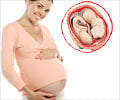Twins are one of nature’s biggest miracles. Monozygotic twins (products of a single zygote) are strikingly similar in appearance, making them a subject of awe all around the globe. Split from the same zygote, they often possess similar physical characteristics, though some differences may be observed.
One of the reasons why monozygotic twins do have physical dissimilarities after birth is the impact of the intrauterine (the condition inside the uterus) environment on both of them. Read on to find out more about how this condition can change the physical aspects of twins.Twin babies share identical genomes and have similar physical characteristics; however, this fact is subject to change. To assess what exactly causes a modification of characteristics, a group of scientists used DNA methylation procedures.
DNA methylation factors: DNA methylation, a chemical activity that affects genes and is responsible for determining health and disease risks among individuals, has now helped scientists shed light on the importance of intrauterine environment for both dizygotic and monozygotic twins. DNA methylation patterns were examined in sets, which revealed a stunning result- the early environmental condition actually alters the epigenome, that is, causes chemical changes in an individual’s DNA and histone proteins.
Environmental impacts: A team of researchers, for the first time, analyzed genome scaled DNA methylation profiles of umbilical cord tissue and blood and placenta of both mono and dizygotic twins to determine the difference in their epigenetic profiles. The team discovered epigenetic profile changes even in identical twins at the time of birth. Difference of intrauterine conditions like blood supply changes, nutritional differences and even fetal position can largely impact the environmental condition faced by a fetus while inside the uterus, contributing to its physical difference compared to his twin.
Interestingly, the altered genes were known to be responsible for growth, metabolism, cardiovascular and diabetic health, which may be a powerful tool in future to determine the twin’s susceptibility to a particular ailment even before birth, and appropriately modifying the intrauterine environment to prevent the gene modification that may have been responsible for the occurrence of that particular ailment.
Source-Medindia










